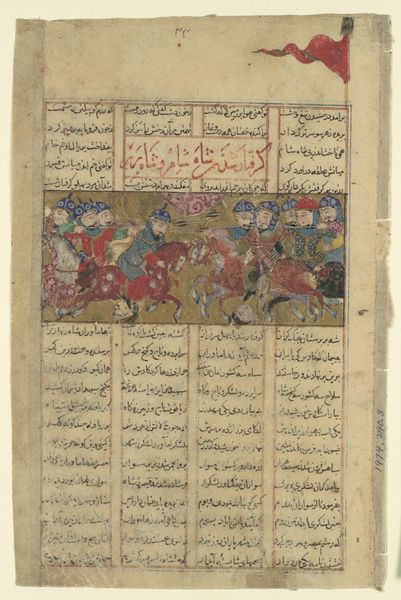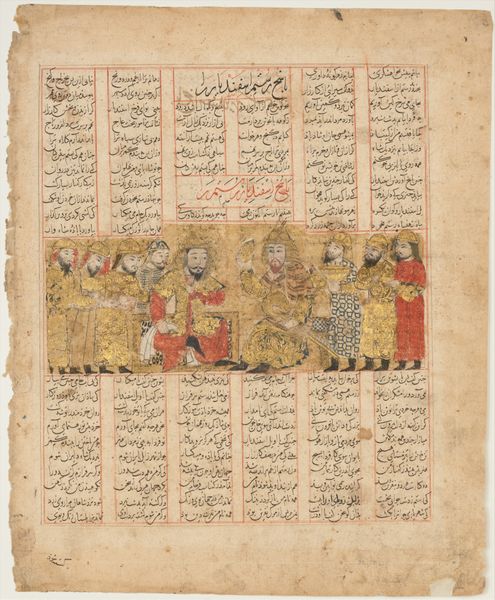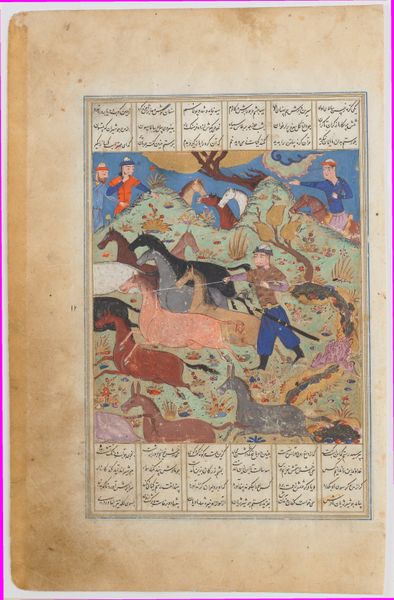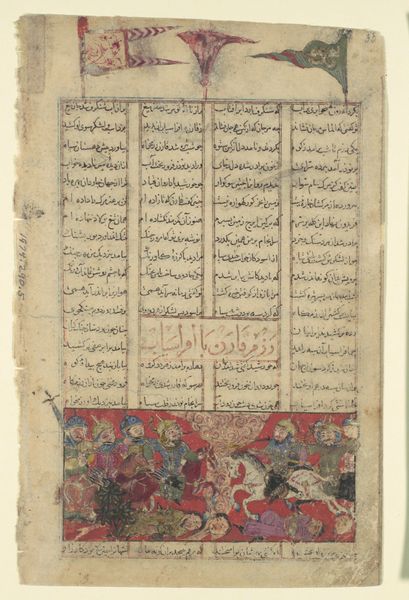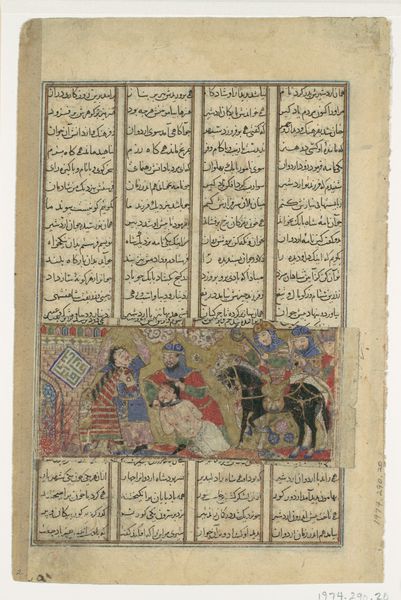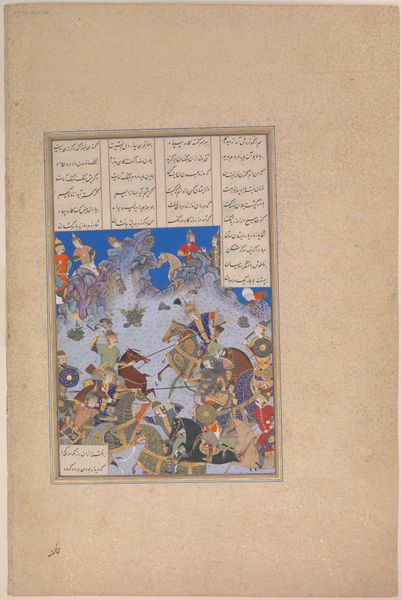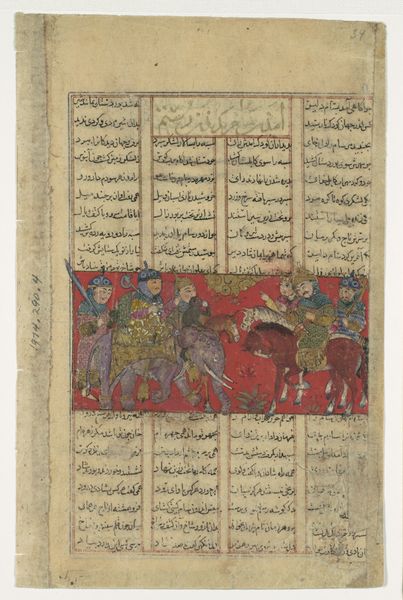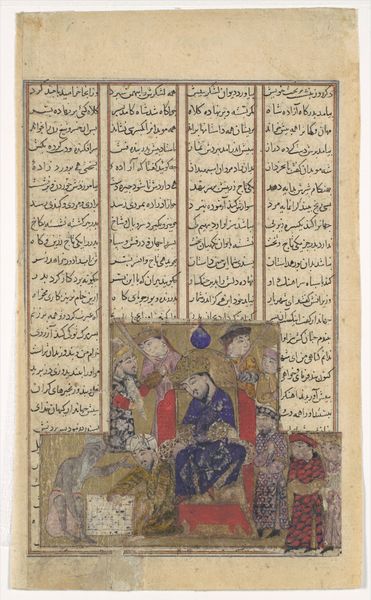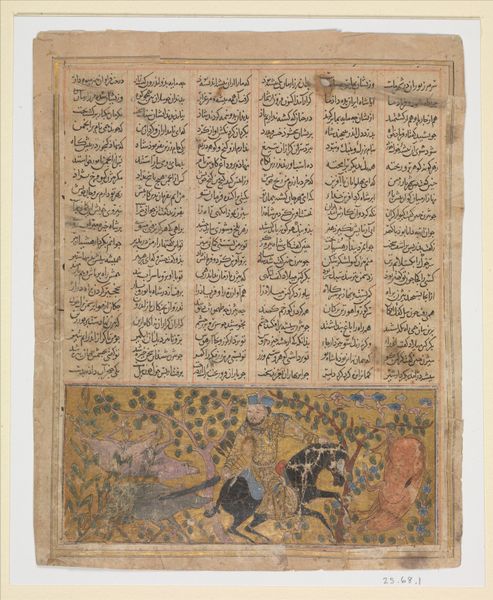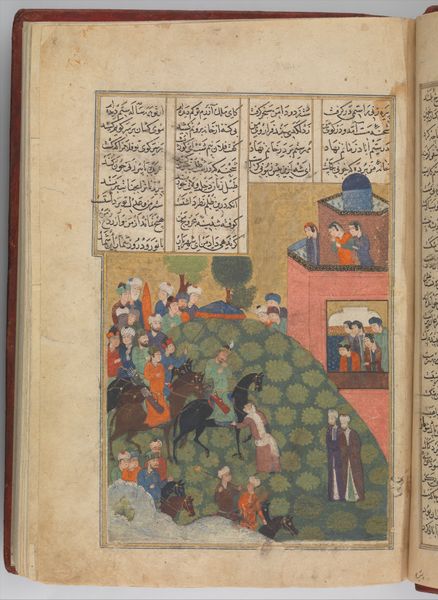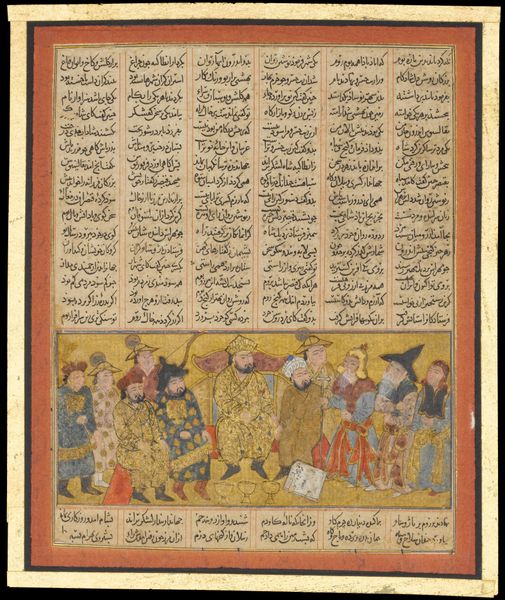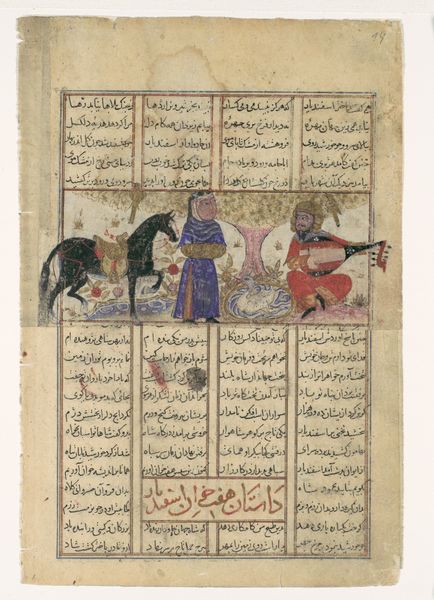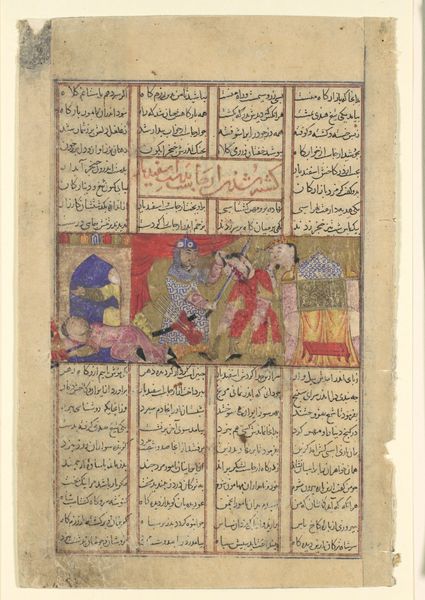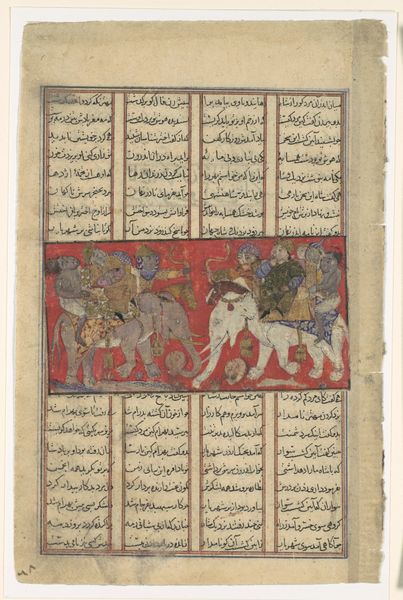
"Rustam Pleads for Tus Before Kai Khusrau," Folio from a Shahnama (Book of Kings) 1316 - 1366
0:00
0:00
painting, paper, ink
#
painting
#
landscape
#
figuration
#
paper
#
personal sketchbook
#
ink
#
coloured pencil
#
horse
#
men
#
islamic-art
#
miniature
Dimensions: Page: H. 14 1/2 in. (36.8 cm) W. 11 7/8 in. (30.2 cm) Painting: H. 3 11/16 in. (9.4 cm) W. 9 3/8 in. (23.8 cm) Text block: H. 11 7/16 in. (29 cm) W. x 9 11/16 in. (24.6 cm)
Copyright: Public Domain
Editor: Right, so, next up is "Rustam Pleads for Tus Before Kai Khusrau," a folio from a Shahnama, or Book of Kings, dating from between 1316 and 1366. It’s currently at the Metropolitan Museum of Art. I find the whole scene kind of flattened, almost like a tapestry. What do you see in this piece that stands out to you? Curator: Well, for me, it speaks volumes about the public function of art during that period. The Shahnama was more than just a beautiful object; it was a powerful tool for shaping and reinforcing ideas about kingship, heroism, and Persian identity, especially during a time of political fragmentation. Editor: So, how would an image like this actually function politically? Curator: Think about it: these lavishly illustrated manuscripts were often commissioned by rulers or high-ranking officials. The figures depicted – Rustam, Tus, Kai Khusrau – they're not just characters in a story, but archetypes of ideal rulers and warriors. By visually associating themselves with these figures, patrons aimed to bolster their own legitimacy and project an image of strength and piety. The very act of displaying such a magnificent object also showcased their wealth and power. How does the composition contribute to that feeling? Editor: It does have a really stagey feeling, as the text borders emphasize the focal space in the middle. Curator: Exactly! And who do you think might have interacted with such a work? Was it for everyone, or more of a select audience? Editor: Good point! It's clearly intended for a limited elite. I hadn't really considered that before. This makes me rethink my initial impression of it just being illustrative. Curator: It’s both illustrative and performative. It reflects a very specific social and political agenda. The miniature becomes a site of negotiation for power. It encourages a new appreciation for art’s entanglement with larger social forces.
Comments
No comments
Be the first to comment and join the conversation on the ultimate creative platform.
